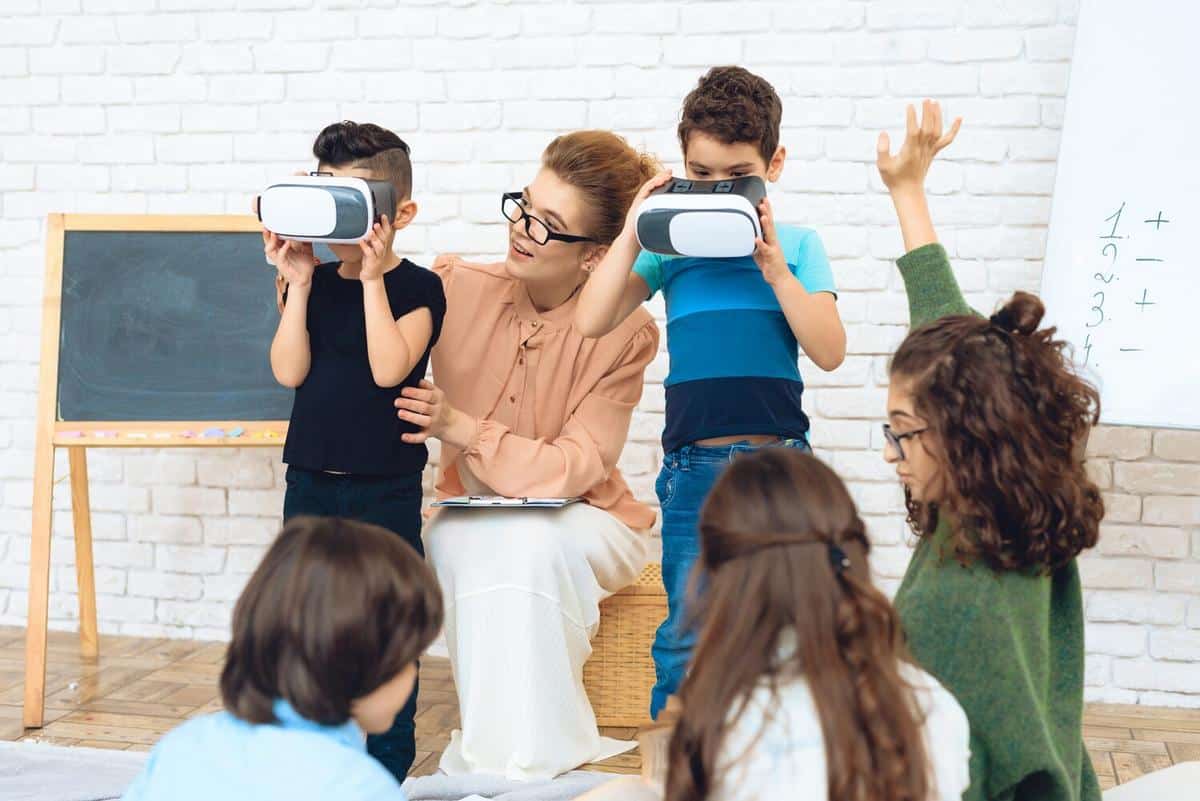
Virtual Reality in Education: Creating Immersive Learning Experiences
Imagine a classroom where students can explore ancient Rome, dive deep into the ocean, or even walk on Mars—all without leaving their desks. Virtual Reality (VR) is transforming education by offering immersive learning experiences that were once the stuff of science fiction.
Virtual reality in education is gaining traction as a powerful tool for enhancing learning experiences. By creating engaging and interactive environments, VR helps students grasp complex concepts more effectively. According to a report by PwC, VR learners were trained up to four times faster than in a classroom environment.
Benefits of VR in Education
One of the primary advantages of VR is its ability to create immersive learning environments. Students can interact with 3D models and simulations, providing a hands-on learning experience that is both engaging and memorable. For instance, medical students can practice surgeries in a risk-free virtual setting, enhancing their skills and confidence.
Expert Insights
Dr. Alex Johnson, an educational technology expert, notes, “VR has the potential to revolutionize education by providing personalized learning experiences that cater to individual learning styles.” This adaptability makes VR a valuable resource for diverse classrooms.
Statistics and Research
Research indicates that VR can improve retention rates by 75% compared to traditional methods. A study by Statista predicts that the VR market in education will reach $700 million by 2025, reflecting its growing importance.
Real-World Examples
Consider the example of a high school teacher who used VR to take students on a virtual field trip to the Great Barrier Reef. The immersive experience allowed students to explore marine life up close, sparking curiosity and enthusiasm for marine biology.
Actionable Tips for Implementing VR
- Start small with affordable VR headsets and apps to gauge interest and effectiveness.
- Integrate VR with existing curricula to enhance, not replace, traditional teaching methods.
- Encourage collaboration by having students work in groups during VR activities.
Comparison Table: VR vs. Traditional Learning Methods
| Aspect | Virtual Reality | Traditional Methods |
|---|---|---|
| Engagement | High | Variable |
| Retention | 75% increase | Standard |
| Interactivity | High | Low |
| Cost | Moderate | Low |
| Accessibility | Improving | High |
| Personalization | High | Low |
| Real-World Application | Strong | Moderate |
| Adaptability | High | Low |
FAQs
How can schools afford VR technology?
Many schools start with budget-friendly VR kits and gradually expand as they see positive results.
Is VR suitable for all subjects?
While VR is particularly effective in subjects like science and history, creative educators can find applications in nearly all disciplines.
In conclusion, virtual reality in education offers a dynamic way to enhance learning experiences, making abstract concepts tangible and lessons more engaging. As technology continues to evolve, VR will likely become a staple in educational settings, providing students with the tools they need to succeed in an increasingly digital world. Educators are encouraged to explore VR options and consider how this technology can be integrated into their teaching strategies to benefit their students. For additional resources and support, visit educational technology websites and communities dedicated to digital learning.


